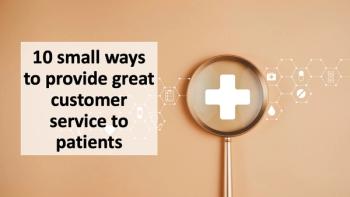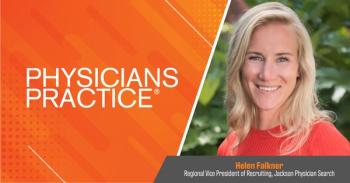
When EHR chat isn’t enough: What practices need from clinical communication tools
Health care practices enhance patient care by investing in advanced communication tools that address EHR messaging shortcomings, ensuring timely and effective collaboration.
Hospital-affiliated clinicians and group practices are investing heavily in electronic health record (EHR) systems to improve documentation, streamline workflows and enhance patient care. In many respects, these systems have lived up to their promise. But when it comes to urgent, real-time communication within and across care teams, practice leaders are discovering a costly shortcoming: the built-in messaging tools often aren’t enough.
Secure chat functions embedded within EHRs may appear to be a convenient replacement for outdated pagers or phone calls. Yet in everyday clinical practice, these tools fall short of the structure, urgency and accountability required in high-pressure environments.
Why built-in chat tools undermine communication
EHR-native chat systems are attractive because they’re already integrated into the clinical workflow. But they often fail in three key areas:
- No backup plan: When a message goes unanswered, there’s no built-in mechanism to escalate it to another provider. This creates risky gaps in coverage that can delay time-sensitive decisions and lead the sender to assume a response is coming.
- Everything feels equal: Without the ability to differentiate between urgent and routine messages, clinicians may overlook critical updates or become desensitized to all notifications. This lack of prioritization puts patient safety at risk.
- Was it received?: EHR-native chat tools typically lack delivery or read receipts. As a result, clinicians are left wondering if a message was seen, understood, or acted on. This uncertainty creates redundant follow-ups and increases the administrative burden.
These shortcomings can delay care, increase liability and burden staff with unnecessary follow-ups.
Even worse, many EHR-native systems don’t offer insight into clinician availability. A message may go to someone who’s off shift, in surgery, or away from their workstation—leaving the sender guessing and accountability unclear.
A reality check for practice teams
Clinical communication in health care is fundamentally different from workplace messaging in other industries. It’s dynamic, time-sensitive and often critical to patient outcomes. Practices need more than basic messaging. They need intelligent, action-oriented communication workflows.
To address this, communication tools must do more than transmit messages. They must support fast, accurate and context-aware interactions across roles and shifts. Limitations practice teams face when using EHR-native chat systems include:
- Scattered tools, missed messages: Care teams in independent and affiliated practices often toggle between EHR chat, text messages, WhatsApp, phone calls and even personal apps. This fragmented approach creates delays, duplicated efforts and missed updates. Without a centralized solution, messages can slip through the cracks.
- Too many messages, not enough boundaries: The message volume in health care is growing rapidly. Providers increasingly find themselves checking secure messages after-hours or on days off, which contributes to emotional exhaustion and burnout. EHR-native tools typically lack the intelligence to prioritize or suppress non-urgent communication.
- Every ping feels the same: Generic alerting systems often flood clinicians with every type of message, whether it’s urgent or not, through the same channel. Over time, this creates alert fatigue, and it becomes harder to spot what truly matters.
- Handoffs that leave gaps: Critical details are often lost during patient handoffs between staff, locations or shifts. While EHRs track records, they can’t guarantee message delivery, acknowledgment or follow-through.
What practice leaders should look for in a communication platform
If your practice relies exclusively on EHR chat, now is the time to reconsider. The right communication platform doesn’t replace your EHR. It enhances it with role-specific workflows that reduce errors and save time.
Key features to prioritize include:
- No message left behind: Implement automated escalation workflows that reroute unanswered messages to backup contacts to ensure clinical alerts don’t sit idle when the initial recipient is unavailable or unresponsive.
- Right person, right time: Use role- and shift-based routing to ensure every message reaches the appropriate on-call provider to remove the guesswork from manual directories or outdated call trees.
- One hub to rule them all: Consolidate all communication channels—text, voice, alerts - into a single secure platform to eliminate the need to switch between multiple apps, systems or devices.
- Boundaries that stick: Enable clinician-level controls for delivery timing and message triage to prevent after-hours interruptions from non-urgent alerts and support work-life boundary protection.
- Smart signals only: Deploy tiered alerts and AI-based filters to distinguish between high-priority and routine messages to reduce alert fatigue and keep clinicians focused on patient care.
- Compliance without the chaos: Activate full audit trails that log message delivery, read status and responses to documentation easier and help practices meet regulatory and legal requirements.
- Plug & play power: Choose systems that integrate with your EHR, on-call schedules, and calendars. This enables real-time syncing and minimizes setup and maintenance.
Better communication, better practice
Clear, reliable communication isn’t just a quality-of-care issue—it’s a practice viability issue. When messages fall through the cracks or clinician burnout rises, everyone pays the price.
Investing in a purpose-built communication platform helps practices deliver care that’s not just faster but safer and more sustainable. It empowers teams to collaborate effectively, respond confidently and stay focused on what matters most: their patients.
As clinical and operational demands grow more complex, practices need more than just a reliable EHR. Thriving in today’s health care environment requires communication tools that match the pace and precision of modern care.
Judit Sharon is CEO & Founder of
Newsletter
Optimize your practice with the Physicians Practice newsletter, offering management pearls, leadership tips, and business strategies tailored for practice administrators and physicians of any specialty.








